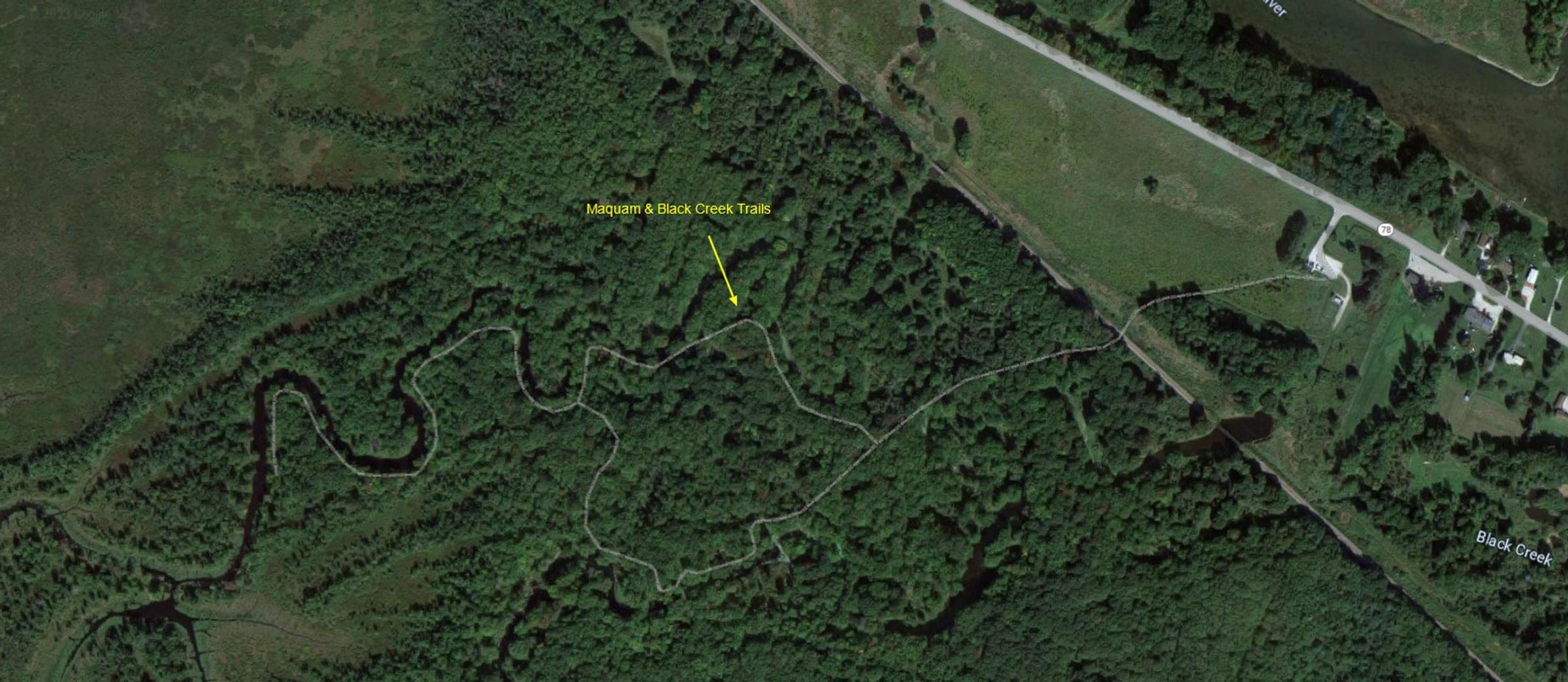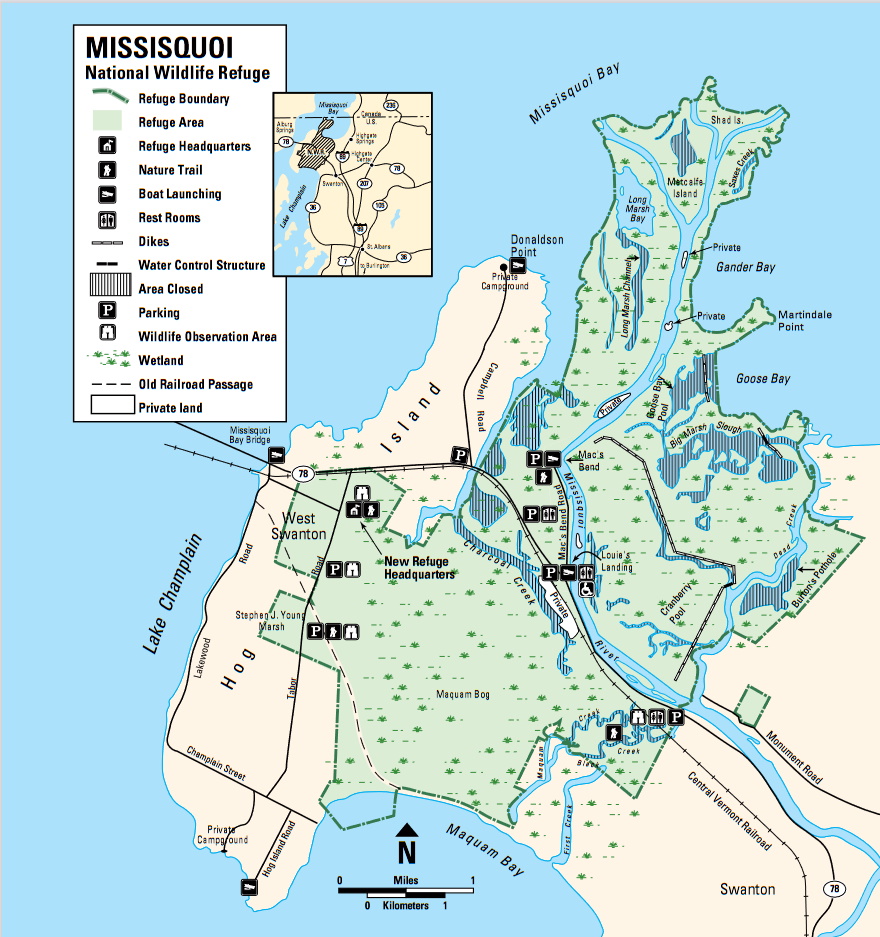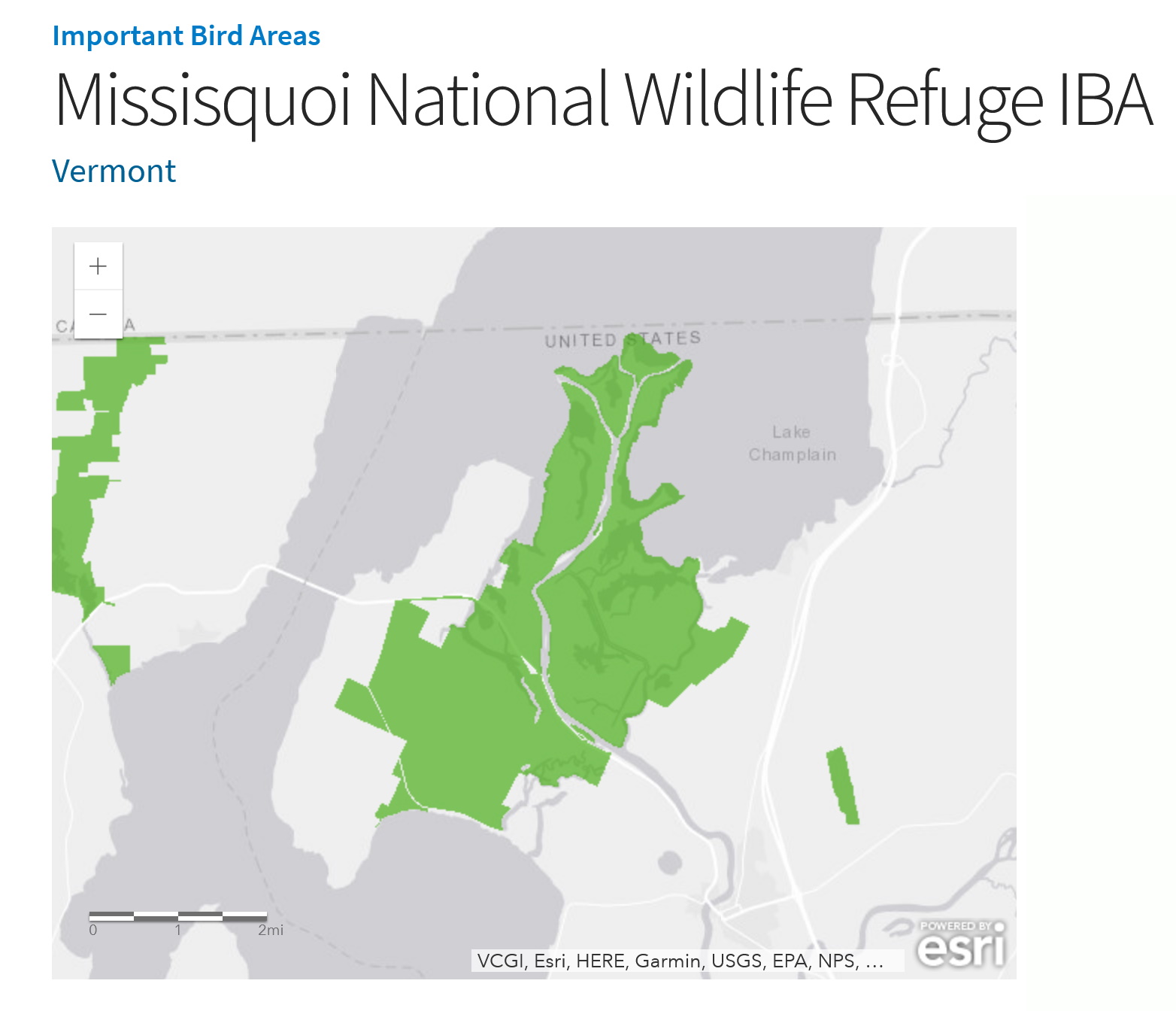Missisquoi NWR--Maquam & Black Creek Trails

Missisquoi NWR--Maquam & Black Creek Trails
Swanton, Vermont 05488
Missisquoi National Wildlife Refuge Official WebsiteMissisquoi National Wildlife Refuge map
Missisquoi National Wildlife Refuge (Audubon IBA) webpage
About this Location
At the parking lot is a kiosk with information about the Missisquoi National Wildlife Refuge and trail brochures with maps and other trail information. A pit toilet is available here. The trail is about 2.5 miles, roundtrip. It begins at the kiosk and proceeds through a field. It then crosses the railroad tracks, just beyond which is a section of woods that has many warblers in the spring, including American Redstart, Chestnut-sided Warblers, and the ubiquitous Yellow Warbler and Common Yellowthroat. Black Creek is to your left. A little further down the trail is an area that has been maintained as a Woodcock habitat. Soon after, Maquam Creek is visible on your right, and Maquam Trail branches off to the right. Northern Waterthrush and Great-crested Flycatchers frequent this area.
Proceeding on Maquam Trail, you will eventually come to a boardwalk that follows the edge of Maquam Creek. Watch for Wood Ducks and beavers. Past the end of the boardwalk, the trail can be very wet in spring. But when it is passable, proceed another quarter mile to the end of the trail, where Black Creek and Maquam Creek meet. Belted Kingfishers are often seen here, and to the south, just out of sight when leaves are on the trees, are a small heron rookery and several Osprey nests.
Retracing your steps, just past the boardwalk is a short trail to the right that connects to Black Creek Trail. Black Creek Trail soon comes to the point where Maqaum Creek Trail branched off. Retrace your steps across the railroad tracks and field to the parking lot.
About Missisquoi National Wildlife Refuge
See all hotspots at Missisquoi National Wildlife Refuge
About Missisquoi National Wildlife Refuge
The Missisquoi National Wildlife Refuge was established in 1943 to provide a habitat for migratory birds. It consists of 6,729 acres, mostly wetland habitats, which support a variety of migratory birds and other wildlife. The 900-acre Maquam bog is designated as a Research Natural Area and the refuge was designated as an Important Bird Area in partnership with the Audubon Society. The Refuge in partnership with other publicly owned (State of Vermont) lands has been designated a Wetland of International Importance under the Ramsar Convention. A mosaic of wetland habitats offers opportunities to see and manage more than 200 species of birds. Fall migration features 20,000-25,000 migrating ducks. Nesting bald eagles, osprey, and a great blue heron colony numbering more than 300 nests are present on the refuge. Please note that most public use is permitted only on designated trails or along the Missisquoi River. Please consult the refuge office for areas that are closed to public use to protect sensitive wildlife and habitat.
About Missisquoi National Wildlife Refuge Important Bird Area
Missisquoi National Wildlife Refuge is located in Swanton where the Missisquoi River joins Lake Champlain, forming one of the largest wetland complexes in the state. Missisquoi combines extensive bottomland and grassland habitat with a number of wetland community types. Management practices such as the creation of impoundments have provided critical habitat for breeding and migrating waterfowl as well as a number of state-listed species. Vermont Natural Community types include Lakeside Floodplain Forest, Red or Silver Maple-Green Ash Swamp, Cattail, Deep Broadleaf, and Deep Bulrush marshes, Buttonbush Swamp, and Pitch Pine Woodland Bog.
Missisquoi is owned and managed by the federal government. Annual monitoring of waterfowl, Osprey, Black Tern, marshbirds, and grassland birds is ongoing. Conservation issues include invasive species such as purple loosestrife, Eurasian milfoil, and zebra mussels as well as agricultural run-off from farms upstream. A new headquarters is planned for the coming years.
Notable Trails
AllTrails.com has a description of this trail on the AllTrails website.
Features
Restrooms on site
Wheelchair accessible trail
Entrance fee
Content from Missisquoi National Wildlife Refuge Official Website, Missisquoi National Wildlife Refuge (Audubon IBA) webpage, http//friendsofmissisquoi.org/visit/trails/Friends of Missisquoi NWR website, and Ken Copenhaven, Green Mountain Audubon
Last updated October 17, 2023

